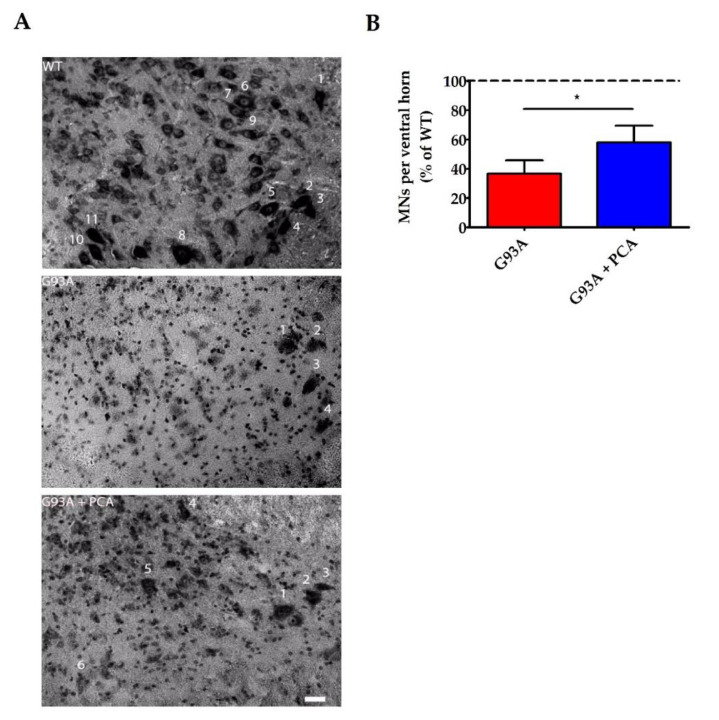Figure 5.
PCA treatment significantly preserves motor neurons in the ventral horn of the spinal cord in the hSOD1G93A mouse model of ALS. (A) Representative images of lumbar spinal cord ventral horns from wildtype control mice (WT), untreated hSOD1G93A control mice (G93A) and hSOD1G93A mice treated orally with 100 mg/kg PCA beginning at disease onset (G93A+PCA). Mice were euthanized at end stage of the untreated hSOD1G93A littermate control mouse and ventral horns were Nissl stained to label neuronal cell bodies. Stained soma were measured along the longest axis and cells were considered alpha motor neurons if the length was greater than 20 μm. Scale bar = 20 μm. (B) Quantification of Nissl-stained alpha motor neurons as described in A. The number of alpha motor neurons in the ventral horns of lumbar spinal cord of untreated and PCA-treated hSOD1G93A littermate mice were normalized and expressed as a percentage of the number of alpha motor neurons measured in the WT littermate control mouse. Data are expressed as the mean ± SEM; n = 7 mice per group; 4–6 ventral horns were imaged per mouse. * indicates p < 0.05 compared to untreated hSOD1G93A littermate controls (paired t-test). Mean number of alpha motor neurons present in the ventral horn lumbar spinal cord for the untreated hSOD1G93A littermate mouse (1.92 ± 0.47) is significantly less than that of the WT (5.55 ± 0.57) (p = 0.004; n = 7 mice per group). Abbreviations used: MNs = motor neurons.

